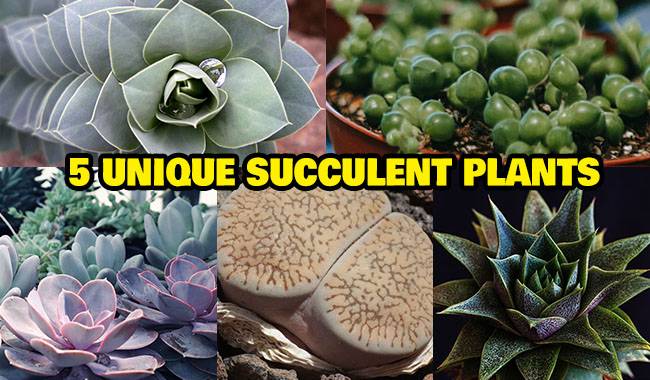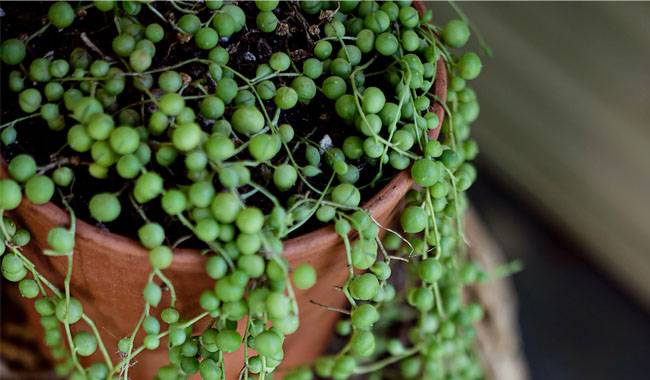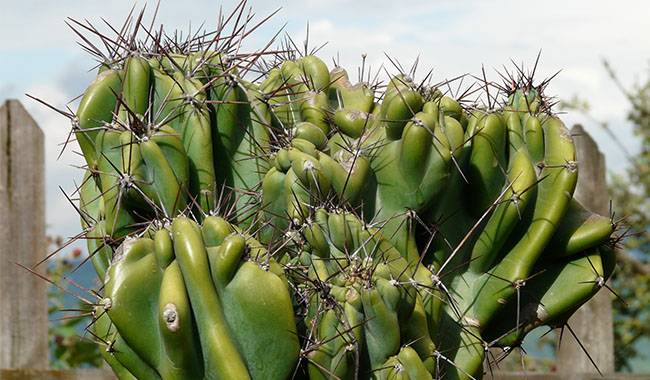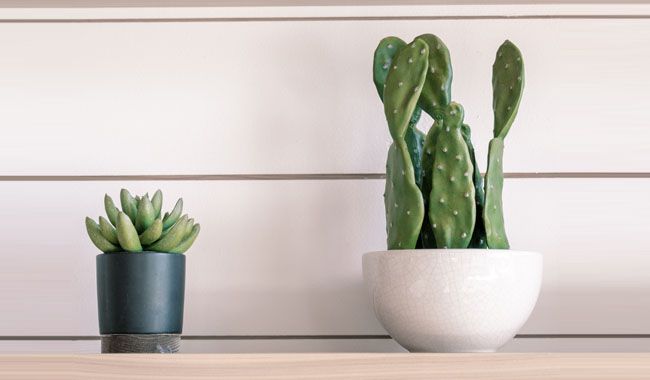
Only a few can compete with Sansevieria plants in terms of hardiness among houseplants. And no other “lazy” gardening favorite has such austere forms and clean lines. The Sansevieria plant is often considered a bore. But take a second look, and you can appreciate its classic look, its versatility, and its ability to grow in places where other houseplants can’t survive. The Sansevieria plant can grow in almost any environment, and it’s suitable for homes and offices and remains the most reliable choice for modern interiors. You will learn how to grow Sansevieria plants in ThumbGarden’s article.
SANSEVIERIA PLANT DESCRIPTION
Sansevieria is an evergreen stemless perennial plant of the genus Sansevieria in Asparagaceae. It is locally known as pike-tail, mother-in-law’s tongue, and snakeskin. Stolons are a characteristic of almost all Sansevieria, as are the creeping rhizomes enable them to form thickets.
Depending on the species, the leaves are arranged in rosettes or spirals around the growing points, stiffly sword-shaped or fleshy-terete, rounded and succulent. The leaves of all Sansevieria are equally effective in storing water.
Flowering in the room is considered rare. The rosette develops from the center of the flowering stem and no longer produces leaves. The pale, delicate flowers are sparsely clustered and have an unexpectedly ethereal fragrance.
Sansevieria are well known for absorbing carbon dioxide even at night. They purify the air of toxins and harmful impurities and are so effective as a filter plant that NASA experts have approved them. Due to their irritating mucus, most species are conditionally toxic.
SPECIES OF INDOOR SANSEVIERIA PLANTS
Sansevieria trifasciata is the most popular species with flattened and hard, upright growing, cross-striped and striped, sword-shaped leaves up to 48 inches (1.2 m) in height and only 3 inches (7.5 cm) in width. They grow in rosettes of 6-8 leaflets.
Shapes and varieties vary, as do the length of the leaves – from short (flower-shaped rosettes) to huge giants – and the shade of the pattern, with or without borders on the leaves. Legendary
Sansevieria laurentii has a thick yellow border, Moonlight has almost white oval leaves, Sensory Bant has white stripes that almost hide its narrow leaves, and Silver Queen has tall silver leaves.
Sansevieria cylindrica is a stylish pencil-shaped, dark green, cylindrical leaf up to 1 inch (2.5 cm) in diameter and up to 20 inches (50 cm) in length, with a longitudinal groove visible only up close.
Sansevieria hahnii is a controversial species from Sansevieria tricolor, which many scientists classify as a separate species (rosacea, sansevieria rosea, low, flowering sansevieria). The triangular, shortened leaves form a flower-shaped rosette.
Less common species include.
Sansevieria Hyacinthoides has lily-like, upward-extending leaves up to 20 inches (50 cm) long with reddish borders, light-colored stripes, and wavy margins. Slightly larger, wavy leaves with lighter spots are also found on Sansevieria liberica.
Sansevieria Parva is a small but attractive plant up to 12 inches (30 cm) tall with miniature silky, narrow, pointed leaves and surprisingly large spikes.
Sansevieria kirkii is a beautiful species with leaves lying almost in a flower-shaped rosette with a broad, silvery-green base and a brownish-white border with coarsely serrated edges. Some unexpectedly hybrid cultivars with narrow, herbaceous, straight leaves (like Friend).
GROWING CONDITIONS FOR INDOOR SANSEVIERIA PLANTS
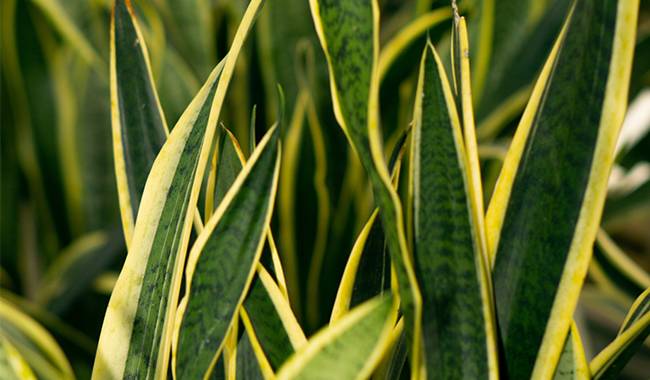
Sansevieria plants are perfectly adapted to shady places and can be placed in rooms as needed. They grow well in all conditions as long as they stay within the room temperature range.
Lighting and Placement
Diffuse, non-direct, bright light or light shade is considered ideal for mulberry plants. However, all mulberries also grow well in shade and indoors. The degree of shade determines the risk of color loss: variegated stripes and shadows can only be maintained in well-lit areas.
These plants only bloom in bright light, but they rarely sacrifice the opportunity to decorate the interior for this purpose. Sansevieria responds to artificial light the same way as it does to natural light.
Temperature and ventilation
Sansevieria is thermophilic and does not tolerate temperatures below 59 °F (15°C), even winter. Sansevieria is not afraid of drafts without excessive cooling, nor is it afraid of temperature fluctuations. Sansevieria can be brought into the fresh air in summer, decorated with it on terraces and balconies, and protected from precipitation.
HOW TO CARE FOR SANSEVIERIA PLANTS INDOORS
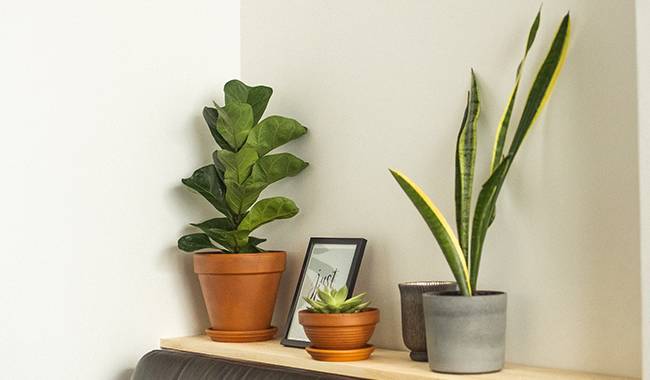
The hardy Sansevieria easily forgives underwatering and requires little care. As long as you avoid over-watering and over-feeding, it will be difficult to harm it.
Watering and humidity
Sansevieria cannot tolerate humidity, but drought usually has little to no effect on its appearance. The plant prefers light soil moisture, with at least a third of the substrate drying out between waterings. Even in summer, once a week, watering is sufficient. In the winter, watering should be reduced a few times to allow the substrate to dry almost completely.
Coldwater should not be used for watering Sanseviera. Pouring water on the leaves and into the center of the rosette is not allowed, nor is leaving excess water in the tray. It is one of the most resistant plants to the effects of dry air and air conditioners and heaters. However, dust and dirt should regularly be wiped off the leaves with a soft, damp sponge.
Feeding and fertilizer components
Only special fertilizers for succulents and cacti are suitable. The standard dosage should be reduced by half. Fertilize in liquid form only in spring and summer, once a month. During the first year after transplanting, you can avoid fertilizing your plants altogether.
Pruning and shaping your Sansevieria
The purpose of pruning and shaping is to cut off the damaged parts. Dry foliage areas can be cut off, leaving a thin strip of dry tissue at the edge. When removing leaves, be sure not to injure the base of the rosette and leave at least 0.2 inches (0.5 cm) of “stump” above the soil.
Repotting, Container, and Substrate
Changing containers for Sansevieria should only be done if the plant has become overcrowded in its previous pot. Sansevieria can be transplanted not only in the spring but throughout its active growth period.
Heavy, stable, shallow, and wide containers, where plants can freely produce stolons and grow, are most suitable for increasing Sansevieria. Stability is especially important for species with long leaves, as they often exceed the weight of plastic pots.
Since Sansevieria is often used in pots and floor containers, most of which are not very deep, the height difference can be compensated for by draining or installing double containers.
Any loose, well-lit succulent mix is suitable for Sansevieria. Commercially available substrates and soils consisting of turf, leaf soil, and sand (2:1:1) can be used. Additional additives in the form of coarse sand, perlite, rock debris, vermiculite, coconut fiber, lithospermum, etc. are welcome.
Pests and problems in cultivation
For manzanita, pests are very rare, and without special circumstances, even scales are not to be feared. The only danger for this succulent plant is rot when the substrate is too wet, and the rosette is moist. Corrective care and emergency replanting are the only measures that need to be taken.
Propagation of Sansevieria plants
This unique plant is very easy to propagate. Adult Sansevieria bushes can be divided into large sections or by separating the rosettes on one side, carefully cutting the roots with a sharp blade, handling and drying the cuts, and taking care not to damage the adventitious roots when transplanting. However, the simple method of using leaf cuttings is preferred.
With Sansevieria, the long leaves do not have to be used as a whole; pieces – columns 2-4 inches (5-10 cm) in length – are sufficient. As with all succulents, the plugs should always be kept dry. Varietal characteristics and mottled foliage are not inherited when cutting foliage, so in Sansevieria, if you want to keep the typical stripes, cut off the leaves so that only the “colored” areas are rooted, cutting off the green part in the middle.
Leaf plugs can be rooted in a substrate (sand, mixture of sand and soil, soil) or water. Immerse them in one-third of the soil, keeping the direction of growth at a slight angle. After 2-3 weeks, the first shoots will be released. After 3-4 months, the “offspring” will reproduce only at the base of the leaves.




